
Plain vs Plane What’s the Difference? Thinking in English
The words "plain" and "plane" are homophones, which means they sound alike but have different meanings. "Plain" can be either a noun, adjective, or adverb, while "plane" can be a noun or a verb. Although both words can refer to flatness, one is used to describe geography, whereas the other is used to describe geometry.
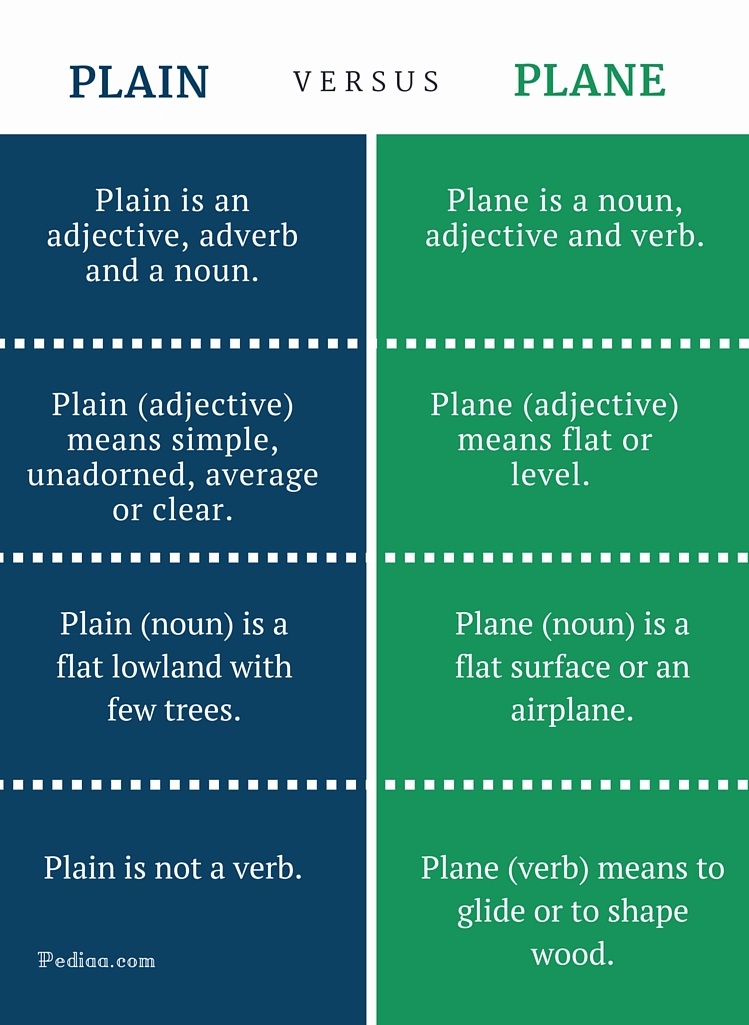
Difference Between Plain and Plane
Plans, Plains, and Planes. The three words in the headline for this post, and words derived from them—listed and defined below—stem from a common source. Plan, plain, and plane all derive from the Latin adjective planus, meaning "clear," "even," "flat, level," and "plain.". Plan comes from the French word meaning "map.

Plain vs Plane 2 words that sound the same but are different YouTube
A plane is also a tool that has a flat bottom with a sharp blade in it. You move the plane over a piece of wood in order to remove the thin pieces of its surface. As a verb, if you plane a piece of wood, you make it smaller or smoother by using a plane. She watches him plane the surface of a walnut board. Finally, a plane or a plane tree is a.

WHAT IS REFERENCE PLANE, HORIZONTAL AND VERTICAL PLANE YouTube
January 12, 2021. Grammar Tips. "Plain" and "plane" are homophones; the two words sound the same although they have different meanings. "Plane," meaning aeroplane, and "plane," meaning a flat surface, are homonyms. These words look the same and sound the same, but they have different meanings. Get ready to memorize some.

Difference Between Plain and Plane
Plain and Plane are two distinct words in the English language that, despite their phonetic similarity, convey different meanings. Plain often describes something straightforward, unembellished, or clear. Plane, on the other hand, can mean an aircraft that flies or a flat, level surface.
/passenger-airplane-landing-at-dusk-867657758-5c79c087c9e77c0001d19d1a.jpg)
Plain vs. Plane How to Choose the Right Word
'Plain' and 'plane' are commonly confused words in English grammar. Understanding the difference between 'plain' and 'plane' is important to use them correctly in written and spoken English. 'Plain' is an adjective that is used to describe something that is simple, ordinary, or lacking decoration or embellishment. 'Plane' is a noun that refers to a flat or level surface, or a tool used for.

"Plane" or "Plain"?
While "plane" and "plain" sound alike, they differ significantly in meaning: Plane is a noun, often short for "airplane.". However, a "plane" can also be a flat surface or a tool used to create a smooth, flat surface. Plain is an adjective meaning "simple," "unadorned," or "easy to understand.". However, it can also.
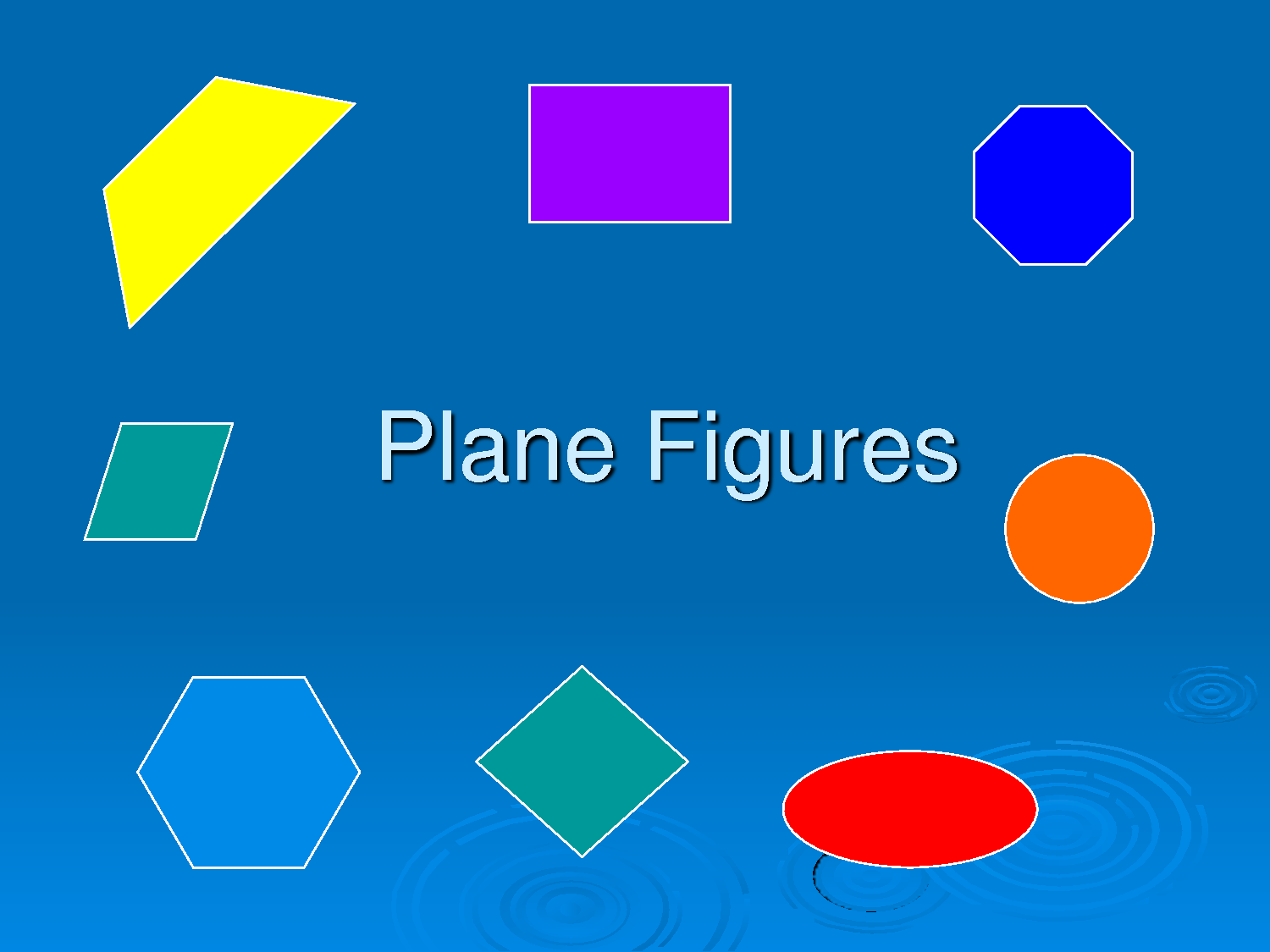
Plane figures and shapes ClassNotes.ng
A plane is a noun, adjective, and verb, whereas plain is an adjective, adverb and noun. A plane is a flat surface that is high above the ground. A flat surface on the earth is plain. From the Middle English term plaine, pleine, the term 'plane' appears first between 1375 and 1425. 'Planum' was the Middle English term for plain in the.
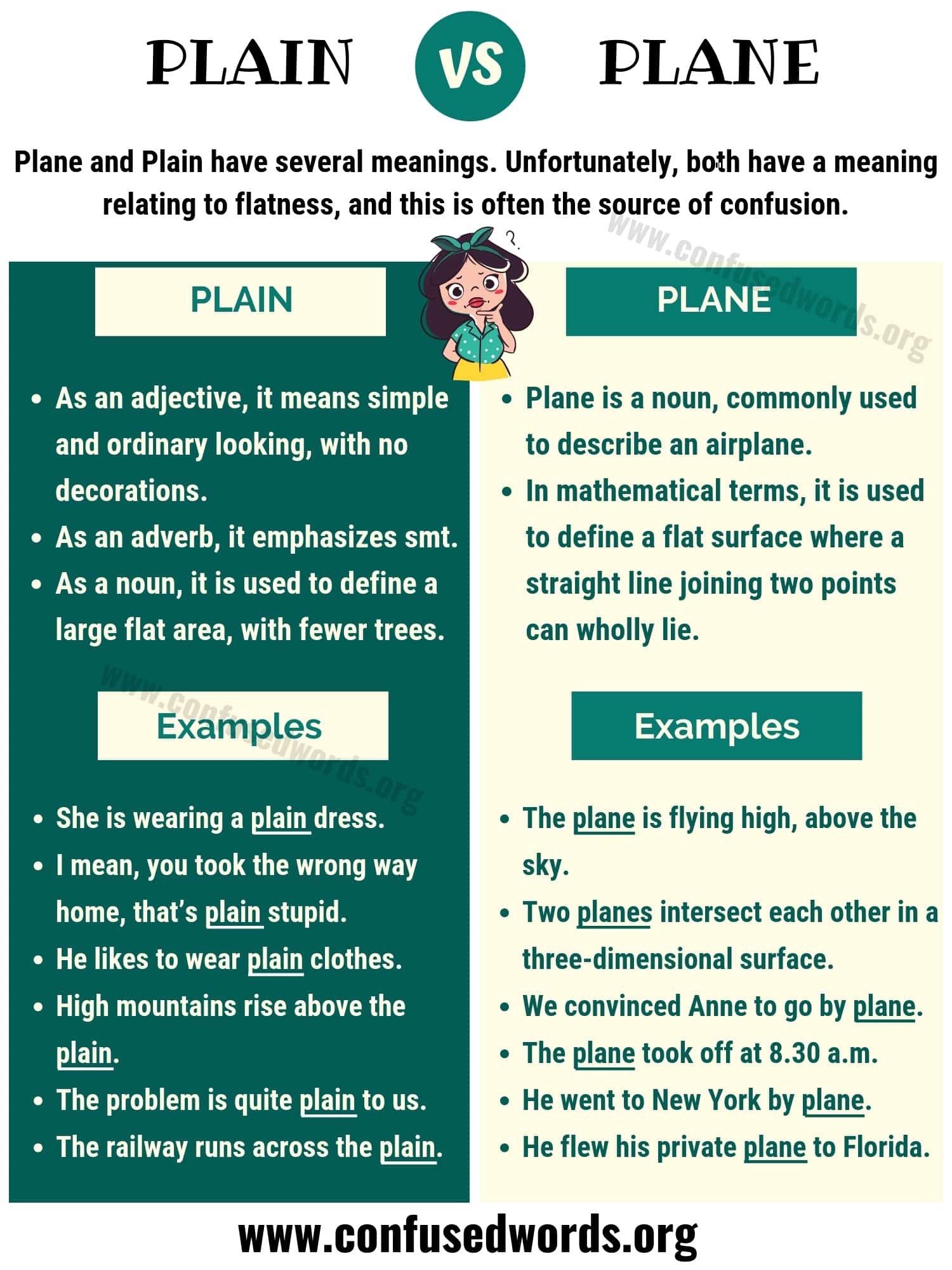
Plain vs. Plane How to Use Plane vs. Plain in English Confused Words
plane : ( noun) (mathematics) an unbounded two-dimensional shape. ( noun) a level of existence or development. ( noun) a power tool for smoothing or shaping wood. ( noun) a carpenter's hand tool with an adjustable blade for smoothing or shaping wood. ( verb) cut or remove with or as if with a plane. ( verb) travel on the surface of water.
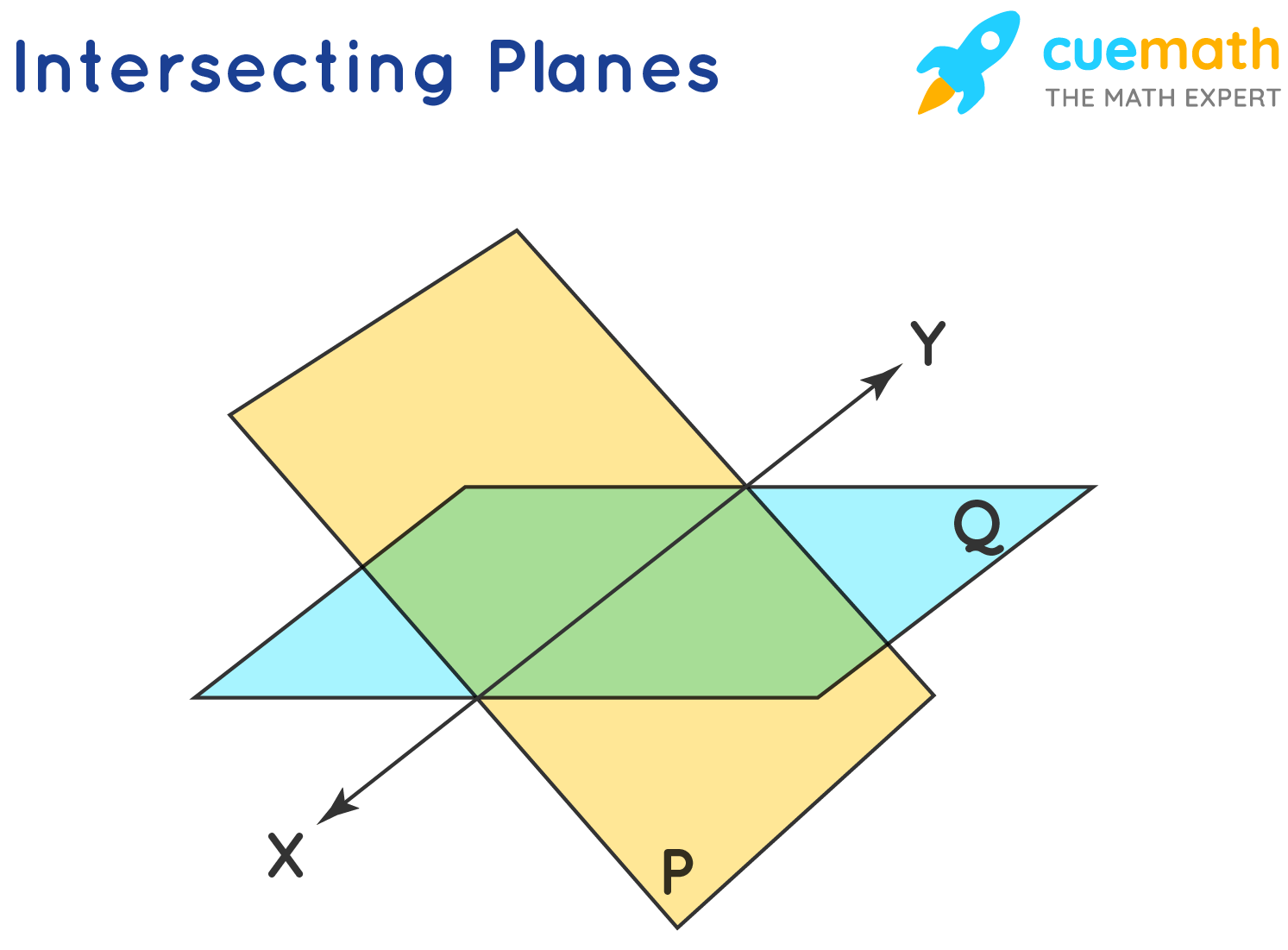
Plane definition in Math Definition, Examples, Identifying Planes
Plain and plane can sometimes be tricky words that are easily confused. In one sense, they mean something very similar but are completely different things. In this lesson, you will learn the.
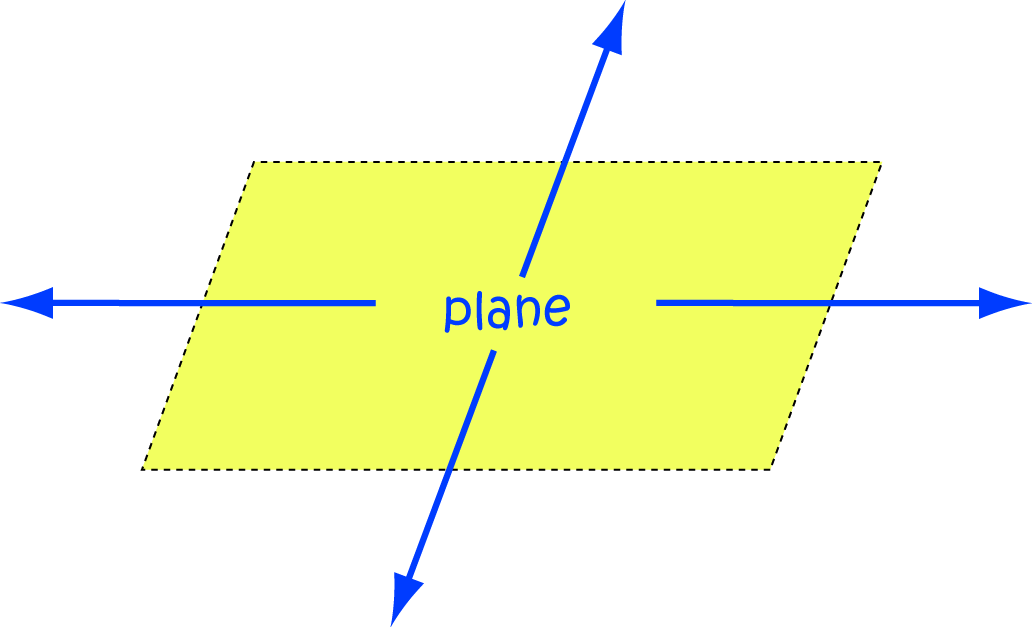
Plane Math Definitions Letter P
A plain is very specifically an area of landscape - empty and flat, smooth, perhaps, but specifically a land formation. A plane is more abstract - a concept of a flat, empty expanse that is not necessarily a physical landscape. A plane can therefore refer to a mathematical or spiritual realm, something theoretical, while a plain refers to a.

Plane vs Plain Difference and Comparison
Trick to Remember the Difference. Plain and plane can be confusing, especially since each word can sometimes describe a flat area. Plain refers to a flat area of land, Plane describes a flat area in geometry. Since plane and geometry each contain the letter E, keeping them straight should not be that difficult.

Difference Between Plain & Plane Video & Lesson Transcript
plane. n an aircraft that has a fixed wing and is powered by propellers or jets. the flight was delayed due to trouble with the airplane. n (mathematics) an unbounded two-dimensional shape. we will refer to the plane of the graph as the X-Y plane. any line joining two points on a plane lies wholly on that plane.

Plain vs. Plane How to Use Plane vs. Plain in English Confused Words
Let's take a closer look at the distinct meanings of these two homophones in various contexts: Plane. Plain. An aircraft. Simple, straightforward, or unadorned. A flat surface (in geometry) A flat, treeless stretch of land (in geography) A woodworking tool for shaving wood.

Plain vs Plane What’s the Difference? Thinking in English
Plain vs. plane. Plain and plane are distinct in most of their definitions, but they almost converge where plain refers to a flat, treeless area of land and plane refers to a flat, level surface. But even here, the distinction is simple: A plain is a land formation, while plane is abstract, mainly appearing in mathematics and other specialized.

Q&A Plane vs plain Australian Writers’ Centre blog
The same source defines ' plane ' as a noun that means: The shortening or abbreviation of airplane. The flat or straight supporting sides of an airplane. A surface that is level or flat. Consciousness or existence. A tool for smoothing surfaces. ' Plane ' can also be a verb that means: To level or make smooth or even.